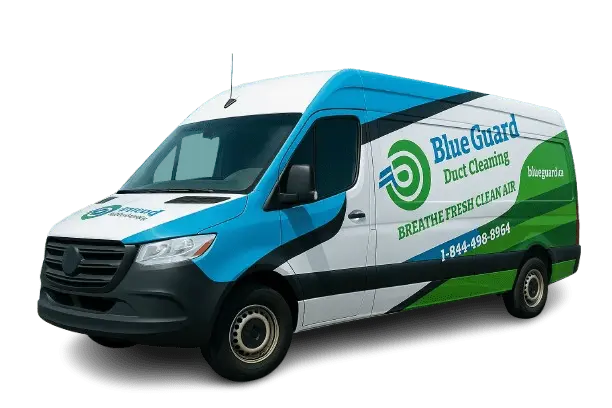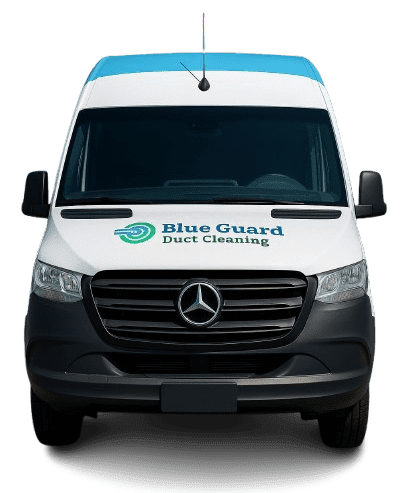We are committed to providing an expert cleaning service. Free estimates are waiting for you!

Breathe easier with our professional air exchange cleaning. We remove dust, allergens, and harmful buildup from your system so your family enjoys cleaner air, better health, and lower energy bills—all with fast, reliable service you can trust.
Regular air exchanger cleaning can improve the overall efficiency of your HVAC system reducing the energy costs.
Regular air exchanger cleaning allows the air exchanger to efficiently remove pollutants, dust, and allergens, resulting in good indoor air quality.
A clean air exchanger can effectively evacuate stale air and moisture and bring in the fresh air that results in minimization of health risks like asthma and sinus.
A clean air exchanger will be effective to maintain good quality air resulting in the increase of comfort level.
Regular maintenance of air exchanger results in effective humidity control.
Air exchanger cleaning will effectively eliminate odors, which is one of the major benefits of air exchangers.
Pollen and germs can be collected in the air exchanger filters, resulting in several nasal allergies.
Continuous exposure to bad-quality air results in congestion and cough
Sinus can be dangerous as it keeps making you sick, especially if it is triggered by your own house.
As the air quality is reduced and the body will have to work harder to breathe there are high chances that you can become tired easily
The bad air quality and dust can cause the eyes to be dry and itchy
Clogged filters in the air exchanger can draw dust reducing the air quality of the house. This can lead to several skin allergies.
When it comes to keeping your air exchanger clean, you deserve the best. Here’s why homeowners across Ontario and Quebec City trust us:
Expert Technicians: Our team is highly trained and experienced. Every technician goes through professional training before working on your system, so you can feel confident your home is in safe hands.
Advanced Equipment: We use state-of-the-art tools designed for deep cleaning. This means we don’t just clean the surface—we remove hidden dust, allergens, and bacteria for healthier air and better system performance.
Hassle-Free Service: From booking to final inspection, we make the process simple. Flexible scheduling, clear pricing, and friendly service mean you get results without stress.
The frequency of air exchanger cleaning depends on several factors, including the type of air exchanger you have, the level of use, and the presence of pets or other sources of contaminants in your home. Here are some general guidelines for how often to clean your air exchanger:
For a standard air exchanger, it is generally recommended to have it cleaned every 2-3 years.
If you have a heat recovery ventilator (HRV), it is generally recommended to have it cleaned every 1-2 years.
If you have pets or live in an area with high levels of outdoor air pollution, it may be necessary to clean your air exchanger more frequently.
If you notice an unusual increase in dust or other contaminants in your home, it may be time to clean your air exchanger.
It is important to note that these are general guidelines and the actual frequency of cleaning may vary based on your specific circumstances. It is always a good idea to consult with a professional HVAC technician to determine the best cleaning schedule for your air exchanger.
The frequency of filter cleaning in an air exchanger depends on the type of filter you have and the level of use. Here are some general guidelines for how often to clean or replace the filter in your air exchanger:
For a standard fiberglass filter, it is generally recommended to clean or replace it every month.
For a washable filter, it is generally recommended to wash it every month.
For a high-efficiency filter, such as a pleated filter or a HEPA filter, it is generally recommended to clean or replace it every 3-6 months, depending on the manufacturer’s recommendations and the level of use.
It is important to note that these are general guidelines and the actual frequency of filter cleaning or replacement may vary based on your specific circumstances. It is always a good idea to consult with a professional HVAC technician or refer to the manufacturer’s recommendations for the specific filter you are using.
There could be a few reasons why your air exchanger is not working after cleaning. Here are a few possible causes and solutions:
The power supply is not connected or the circuit breaker has tripped: Make sure that the power supply to the air exchanger is properly connected and that the circuit breaker has not tripped.
The air exchanger is not properly installed: If the air exchanger was not properly installed, it may not function correctly. In this case, you may need to have it reinstalled by a professional.
There is a malfunction or problem with the air exchanger: If the air exchanger was working properly before cleaning but is not functioning correctly after cleaning, there may be a malfunction or problem with the unit itself. In this case, you may need to have it repaired or replaced by a professional.
The air exchanger was damaged during cleaning: If the air exchanger was damaged during cleaning, it may not function correctly. In this case, you may need to have it repaired or replaced by a professional.
It is always a good idea to consult with a professional HVAC technician if you are experiencing issues with your air exchanger after cleaning. They will be able to diagnose the problem and recommend the appropriate solution.
Yes, air exchangers should be cleaned on a regular basis to ensure that they are functioning properly and efficiently. Over time, dust, dirt, and other contaminants can accumulate in the air exchanger, reducing its performance and potentially leading to issues such as poor indoor air quality or system malfunctions.
Cleaning your air exchanger can help to remove these contaminants and improve the overall performance of the system. It can also help to extend the lifespan of the air exchanger and reduce the need for costly repairs or replacements.
The lifespan of an air exchanger can vary depending on the type of air exchanger you have and how well it is maintained. Here are some general guidelines for the lifespan of common types of air exchangers:
Heat recovery ventilators (HRVs): The lifespan of an HRV is generally 10-15 years.
Energy recovery ventilators (ERVs): The lifespan of an ERV is generally 10-15 years.
Air-to-air heat pumps: The lifespan of an air-to-air heat pump is generally 10-15 years.
Central air conditioners: The lifespan of a central air conditioner is generally 10-15 years.
It is generally not recommended to turn off your air exchanger in the winter. In fact, it is important to keep your air exchanger running during the winter months to ensure that your home has proper ventilation and to prevent excess moisture from building up inside your home.
Excess moisture can lead to a variety of issues, including mold growth, structural damage, and respiratory problems. An air exchanger helps to remove excess moisture from the air by bringing in fresh, dry outdoor air and exhausting indoor air.
If you are concerned about energy efficiency, there are a few steps you can take to help reduce the energy usage of your air exchanger:
Make sure the air exchanger is properly sealed and insulated.
Keep the air filter clean and replace it as needed.
Set the thermostat to a lower temperature when you are not home or when you are sleeping.
Use a programmable thermostat to automatically adjust the temperature when you are not home or when you are sleeping.
It is always a good idea to consult with a professional HVAC technician if you have any concerns about the operation of your air exchanger. They will be able to provide specific guidance based on your individual circumstances.

